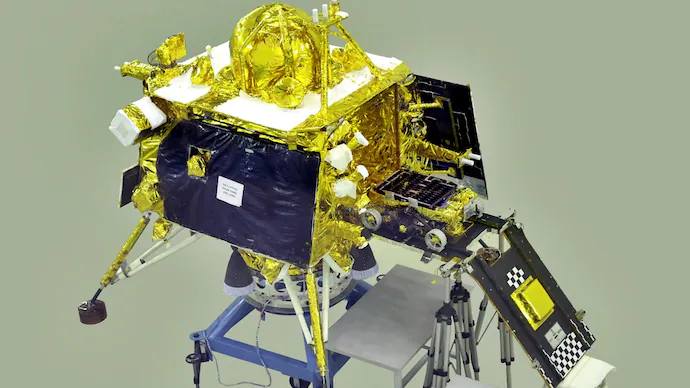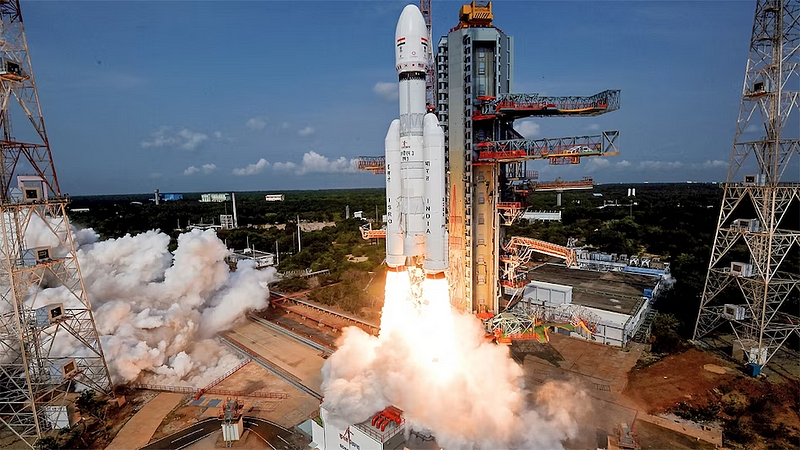Chandrayaan-3: Unlocking the Mysteries of the Moon
Written on
Exploring Lunar Secrets
Chandrayaan-3 is designed to follow up on Chandrayaan-2, focusing on successfully landing and exploring the lunar surface. This mission features a Lander and Rover setup, set to launch aboard the LVM3 from SDSC SHAR in Sriharikota.

The propulsion module will transport the Lander and Rover to a circular orbit approximately 100 kilometers above the moon. This module includes the Spectro-polarimetry of Habitable Planet Earth (SHAPE) payload, designed to analyze Earth's spectral and polarimetric characteristics from lunar orbit.
Lander and Rover Payloads
The Lander is equipped with various scientific instruments, including:
- Chandra's Surface Thermophysical Experiment (ChaSTE): This will measure the thermal conductivity and temperature of the lunar surface.
- Instrument for Lunar Seismic Activity (ILSA): This device will monitor seismic activity near the landing site.
- Langmuir Probe (LP): It will assess plasma density and its fluctuations.
Additionally, a passive Laser Retroreflector Array from NASA will be included for lunar laser ranging studies.
The Rover carries:
- Alpha Particle X-ray Spectrometer (APXS) and Laser Induced Breakdown Spectroscope (LIBS): These tools will analyze the elemental composition of the landing area.
Chandrayaan-3 integrates an indigenous Lander module (LM), a Propulsion module (PM), and a Rover, aiming to develop and demonstrate new technologies essential for interplanetary missions. The Lander is designed for a soft landing at a predetermined lunar site, subsequently deploying the Rover to conduct in-situ chemical analyses as it travels across the lunar terrain.

The PM’s primary role is to carry the LM from launch vehicle injection to a final circular polar orbit around the moon, as well as separate the LM from the PM. Besides this function, the Propulsion Module also carries a scientific payload that will be activated after the Lander separates. The GSLV-Mk3 has been selected for launching Chandrayaan-3, which will place the combined module into an elliptical parking orbit approximately 170 x 36,500 km in size.
Mission Goals and Advanced Technologies
The objectives of Chandrayaan-3 include:
- To demonstrate a safe and soft landing on the lunar surface.
- To showcase the Rover's ability to navigate on the moon.
- To perform scientific experiments on-site.
To fulfill these mission goals, the Lander is equipped with several advanced technologies, including:
- Altimeters: Utilizing both Laser and RF-based systems.
- Velocimeters: Incorporating Laser Doppler Velocimeters and a Lander Horizontal Velocity Camera.
- Inertial Measurement: Featuring a Laser Gyro-based system for inertial referencing along with an accelerometer package.
- Propulsion System: Comprising 800N throttleable liquid engines and 58N attitude thrusters, alongside throttleable engine control electronics.
- Navigation, Guidance & Control (NGC): Involving powered descent trajectory design and associated software.
- Hazard Detection and Avoidance: Using a dedicated camera and processing algorithm for detecting landing hazards.
- Landing Leg Mechanism: Ensuring a safe touchdown.
To validate these advanced technologies under Earth conditions, a series of specialized tests for the Lander have been successfully conducted, including:
- Integrated Cold Test: Demonstrating the performance of integrated sensors and navigation using a helicopter as a test platform.
- Integrated Hot Test: Showcasing closed-loop performance with sensors, actuators, and NGC using a tower crane.
- Lander Leg Mechanism Performance Test: Conducted on a lunar simulant test bed to replicate various touchdown conditions.
Anticipation for Chandrayaan-3 is palpable. The first Chandrayaan mission achieved great success, while the second faced challenges. Now, all hopes are pinned on this third endeavor.